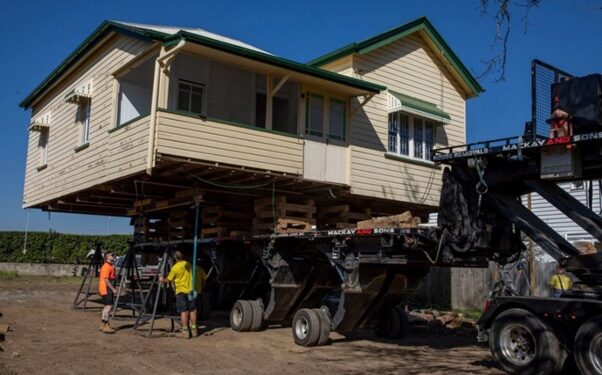Innovative Techniques for Sustainable Building Removals

Sustainability in the construction industry is not just a trend; it’s a crucial aspect of modern urban development. With cities expanding and buildings aging, there’s a growing need for eco-friendly practices that mitigate the environmental impact of construction and demolition. Sustainable building removals provide an essential link in the chain, ensuring the responsible dismantling and clearing of structures. This long-form content explores seven innovative techniques revolutionizing the industry and serving as a blueprint for eco-conscious builders, sustainable architects, and urban planners.
The built environment accounts for nearly 40% of global emissions, a statistic that’s hard to ignore. It is, therefore, incumbent upon professionals within the industry to explore sustainable alternatives to standard removal practices. These innovative techniques are not only environmentally friendly but also contribute to a more efficient use of resources and often yield cost-saving benefits. This post covers the breadth and depth of such methods, from deconstruction to waste-to-energy solutions, opening new avenues for a greener future in construction.
Technique 1: Deconstruction vs. Demolition
Sustainable building removal begins with choosing deconstruction over demolition. Unlike demolition’s fast-paced destruction, deconstruction systematically disassembles a building to recover original materials. This approach cuts down on waste and lessens the environmental impact by using less heavy machinery.
The key distinction between deconstruction and demolition is the emphasis on material recovery and recycling. Instead of seeing the building as waste, deconstruction sees it as a resource for salvage and reuse. This approach is beneficial for structures with historic or valuable materials that can be repurposed or restored, enhancing a community’s character.
Deconstruction is eco-friendly and boosts local economies by creating jobs in material recovery and upcycling. Research shows deconstruction can save up to 90% of a building’s materials, preventing them from ending up in landfills and cutting the carbon footprint of producing new products.
Technique 2: Selective Demolition
While deconstruction is ideal in many cases, there are times when complete removal of a building is necessary. In such situations, a more targeted approach, selective demolition, becomes the go-to method for sustainable removals.
Selective demolition involves meticulously planning and executing the removal of specific parts of a structure, thereby reducing waste and preserving elements that can be reused or recycled. By using advanced technology and demotion techniques, the process minimizes the impact on the surrounding environment and reduces the resources required for waste management.
Technical advancements in machinery and construction mapping tools allow for pinpoint accuracy in the demolition process, with minimal collateral damage to the building or the area. This precision ensures that the project maintains a focus on sustainability without sacrificing efficiency.
Technique 3: Material Reuse and Recycling
Once materials have been salvaged from a deconstruction or a selective demolition project, the next step is to ensure that they find new life in other developments. This is where material reuse and recycling come into play, turning the old into the new responsibly and sustainably.
Not all materials can be easily recycled, and not all salvaged pieces are suitable for immediate reuse. It takes a competent materials management team to assess which elements can be directly reinstalled into new projects and which can be processed for recycling.
For non-reusable materials, recycling presents a viable solution that diverts waste from landfills. Advanced recycling techniques have made it possible to break down a wide range of materials, from concrete and wood to insulation and metals, without compromising their quality for future use.
Technique 4: Salvaging Historic and Valuable Materials
One of the lesser-tapped potentials in sustainable building removals is the preservation of historic and valuable materials. This involves recognizing the architectural and cultural significance of materials, setting them aside for specialized treatment, and integrating them into future structures.
Old buildings often contain materials that are no longer in production or that possess unique properties and aesthetics. Salvaging these materials can not only reduce the embodied energy of new products but can also add a timeless quality to modern structures.
Sustainable architects have a significant role to play in the preservation of these materials. By actively identifying and advocating for the reuse of such elements, architects can inject sustainability into the design phase and ensure that these materials inform the new building’s aesthetic and environmental impact.
Technique 5: Waste-to-Energy Solutions
Building removals generate a significant amount of waste. Waste-to-energy solutions offer a way to harness this waste and convert it into usable energy, providing an added level of sustainability to the removal process.
Modern waste-to-energy technologies, such as incineration, gasification, and pyrolysis, can convert waste materials into electricity or heat. This approach not only reduces the reliance on traditional fossil fuels but also offers an environmentally friendly way to manage waste that cannot be recycled or reused.
Aside from the environmental benefits, waste-to-energy solutions can have significant financial implications. Project stakeholders may find additional revenue streams from the energy produced, contributing to the overall feasibility of sustainable removals.
Technique 6: Green Building Certification and Compliance
To ensure that sustainable building practices are maintained and acknowledged, obtaining green building certifications and ensuring compliance with relevant standards play a vital role in the process.
Green building certifications, such as LEED or BREEAM, serve as a validation of a project’s commitment to sustainability. They promote best practices, encourage innovation, and provide a framework for continuous improvement in sustainable removals.
Maintaining compliance with green building standards requires careful planning and execution. This includes integrating sustainability considerations into the project from the outset, communicating with stakeholders, and maintaining rigorous documentation and reporting throughout the removal process.
Conclusion
Innovative techniques for sustainable building removals are more than just a set of processes; they represent a fundamental shift in the construction industry’s approach to waste, materials, and resources. By incorporating these practices, builders, architects, and urban planners can significantly contribute to the sustainability of our cities and communities.
For those at the forefront of the industry, adopting these practices is not just about meeting regulations or gaining publicity; it’s about taking ownership of the footprint left by our built environment and paving the way for a future where every brick tells a story of sustainability and stewardship.






